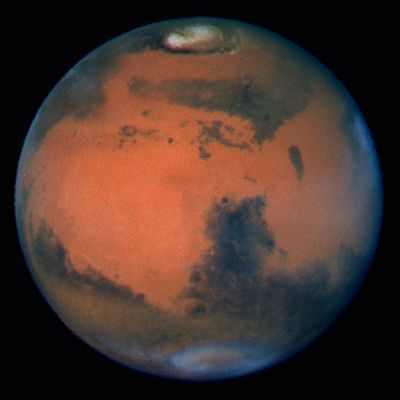|
By Ruicong (Jack) Zhong
Editor Arianna Winchester With the release of many thought-provoking science fiction movies on space exploration, such as Interstellar, many people have begun to wonder if we too will inhabit planets in distant solar systems. While we look out farther into the universe in search of compatible Earth-like planets, we are overlooking a prime candidate for human colonization in the future: Mars. As time progresses, our need to start a human settlement on another planet is becoming increasingly clear. The danger of catastrophic events happening on Earth is imminent, even if there is only a small chance of such events happening. For instance, the onset of a nuclear war is a threat to all life. Starting a colony on another planet would give us some security in case of an apocalyptic event. Even if a habitable planet in a distant solar system can be found within the next 10 years, the possibility of ever reaching such a planet is slim with our current technology. The nearest star system, Alpha Centauri, is 4.3 light years away. That means if astronauts will be able to travel at the speed of light (3×108 m/s)—an impossible task with present-day spacecrafts—about 4 years will pass on Earth before they reach the destination. Currently, only one human spacecraft, Voyager 1, has ever left our solar system, yet Voyager is traveling at a snail’s pace of 1.7×104 m/s. Granted, the development of such vehicles may be possible if there is a breakthrough in physics research or engine technology. However, we can’t depend on such breakthroughs to happen anytime soon. Even if we get there, there is no guarantee that a faraway planet is habitable for life, since we have not sent any probes to scout out the real estate. Even on this planet, we’ve seen how traversing new territory without previous knowledge can be dangerous. While exploring the Americas, many European colonists died after successfully crossing the Atlantic since they didn’t know anything about the climate or conditions. Without knowledge of the destination, the space colonists might fall victim to similar misfortune. Instead, we should start by looking much closer to home. We know Mars will take about 1 year to reach using current spacecrafts. That is comparable to the voyage between Europe and the Americas in colonial times. Since we have sent rovers and probes to Mars, we have a good grasp of the conditions on the planet. Such knowledge is crucial for the effective planning of a mission. We also know that Martian climate can potentially be hospitable to humans: temperatures on Mars can reach a comfortable 70°F near the equator. Mars also does appear to have water and methane underground. An average Mars day is 24.6 hours, similar to that on Earth. Lastly, we know that even though Mars’ gravity is 38% of Earth’s gravity, it is still much stronger than gravity on the moon. All of these factors make Mars a great candidate to support human life in the future. Still, Mars does require much work to become as welcoming of a home as Earth. Mars lacks a strong magnetic field and thick atmosphere like Earth’s to protect the surface from cosmic radiation. Too much cosmic radiation can cause mutations in our DNA that can trigger cancerous growth. Also, temperatures on Mars can get extremely cold in certain areas of the planet. To make the colonization of Mars possible, we are currently in the process of developing technology to tackle those issues and more. One of the most costly aspects is the rocket we would need to get there. SpaceX, a space transport company, is developing reusable rockets, which would dramatically reduce the price of rocket launches. To deal with cosmic radiation, colonists could hypothetically bury their Martian habitats under a thick layer of soil and surround them with radiation shielding materials like lead. Mars residents could use solar power to provide heating and lighting in the place of fossil fuels abundant only on Earth. Looking even further into the future, we may eventually colonize more distant planets, but Mars is our best option at the moment—and a pretty good option, too!
0 Comments
Leave a Reply. |
Categories
All
Archives
April 2024
|

